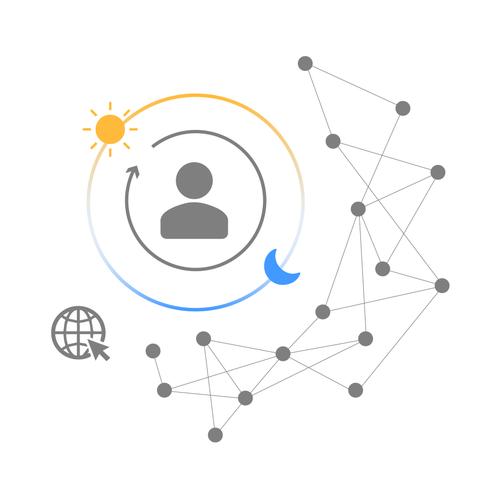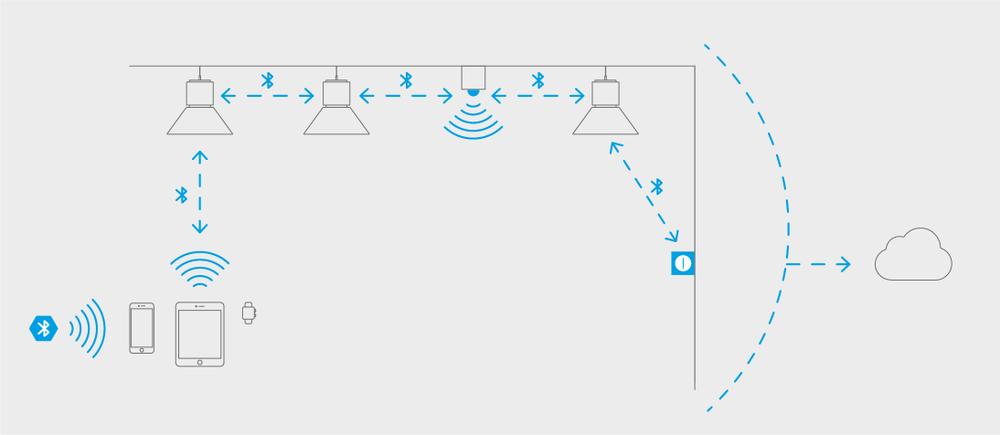New challenges ahead in the lighting industry
Feb 19 2019
Lamp tackles the new lighting challenges through two technology pillars: Tunable white and connectivity.
The lighting industry has experienced a technological revolution following the arrival of LEDs and digitalisation this entailed. Just as most of the industries, it is immersed in a wave of constant changes and transformations.
To be able to grasp what the new challenges the lighting industry is facing, we need to understand its evolution. As technology has progressed, lighting has "matured" and so have the needs of the users, going through different stages: Functional lighting, efficient lighting, comfortable lighting, etc. We are currently witnessing a day and age when users have become more aware, have a more active lifestyle, and are more concerned about general well-being. In this day and age, lighting has become emotional, connected, and intuitive.
Architectural spaces are also changing in order to adapt to new lifestyles. Likewise, workspaces are becoming more flexible, adaptable, and dynamic; health facilities have become kinder and more human-friendly; hotels and tourist establishments, more customisable; stores are now more focused towards experiences, and urban spaces re increasingly more interactive. It is therefore necessary for lighting solutions to be dynamic, adapted to each specific space, each moment, and each user.
The most innovative proposals let us integrate, in a simple way that does not involve major difficulties in terms of their installation, lighting systems that can regulate light intensity based on natural light supply, thus optimising energy consumption and generating lighting scenes that are synchronised with the variation of natural light, adjusted to our biological rhythms (circadian cycle), so that the lighting varies in intensity and tone (2700-6500 K) as the time of day passes, respecting our natural states of maximum concentration, or relaxation, fostering greater connection with the environment and promoting the user well-being, or enabling the selection of the type of lighting required depending on the task to be carried out.
Lamp's dynamic lighting solution value proposition not only seeks to add a layer of technology to lighting systems, but to understand the user (their needs and the way in which they experience space) to foster their well-being and maximise their experiences. According to Ignasi Cusidó (Lamp's CEO): "To achieve this, it is necessary not only to be an expert in the new technologies that are revolutionising our sector and understand their potential, but also, above all, to materialise all the experience and knowledge related to proper lighting that we have accumulated over more than 45 years of experience in the lighting industry, that is Lamp's DNA."
Lamp tackles these lighting challenges through two technology pillars: Tunable white and connectivity.
What is tunable white and why it should be included in space lighting planning?
Light has an impact on the user from a visual, biological and emotional point of view. Considering that studies show that we spend approximately 90% of our time indoors, and that, as we have seen, those areas are becoming increasingly flexible, Tunable White allows us to select from a wide range of shades within a single luminaire, from the warmest (2700 K) to the coldest (6500 K) whites. This is key to achieve optimal lighting in any space and to adapt the light to the various activities that may take place in it.
Lamp creates a dynamic solution adapted to the different areas of application, with special emphasis in General Lighting solutions for offices, schools, hospitals, nursing homes, etc. providing well-being and flexibility, thus satisfying the requirements of the new well-being standards for buildings, such as the WELL certification of the International WELL Building Institute. But also addressing the needs of hospitality or commercial spaces.
What is connected lighting and how does it work?
Connectivity applied to lighting makes it possible to create a network with all the luminaires in any given space connected to each other by means of Bluetooth Low Energy Standard Protocol, in which each one of them becomes a smart node, enabling an intuitive, flexible, scalable, tactile and secure way of controlling lighting, which in turn entails greater degree of interaction with the user.
This new technological layer added to lighting also makes it possible for sensors to be integrated into luminaires, enabling data collection which, when properly analysed, can help optimise the use of spaces. Furthermore, its wireless nature means easy system installation, even in existing networks, and it all can be controlled from any mobile device.



